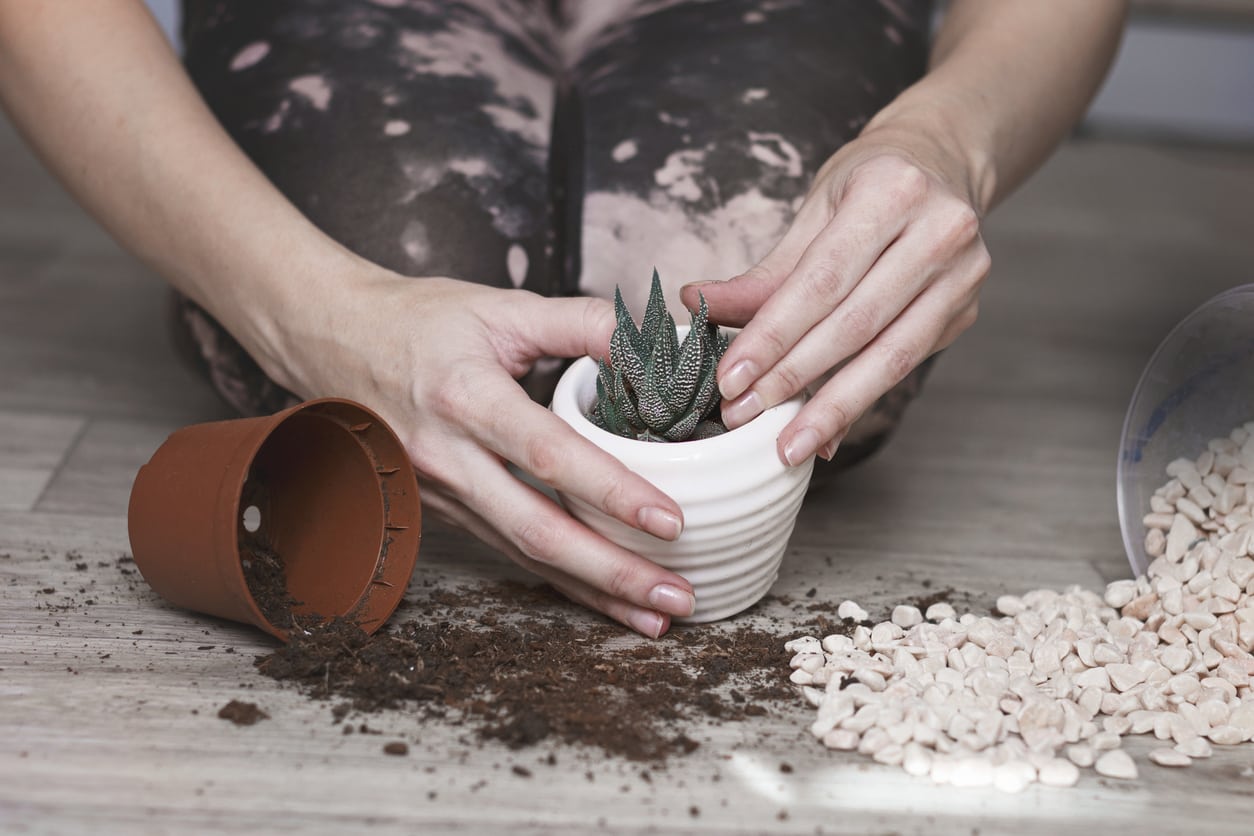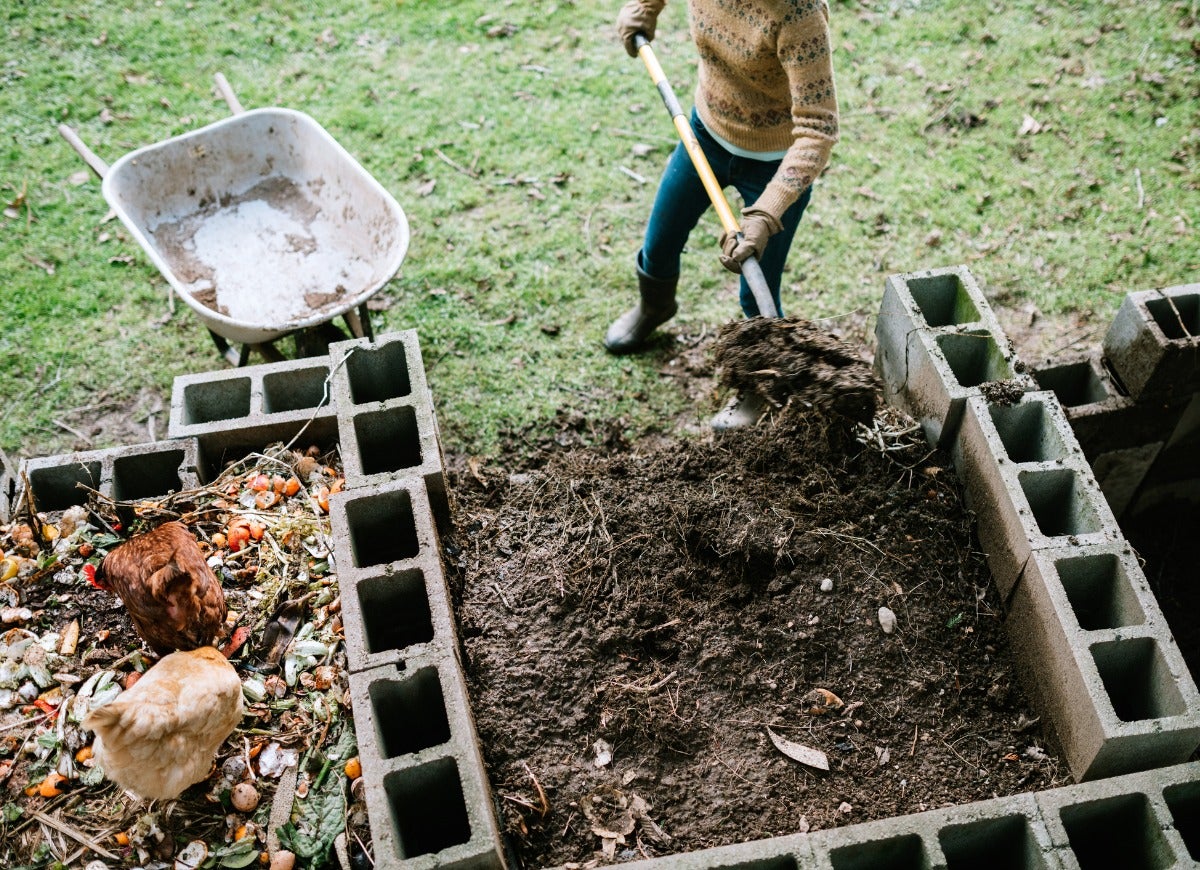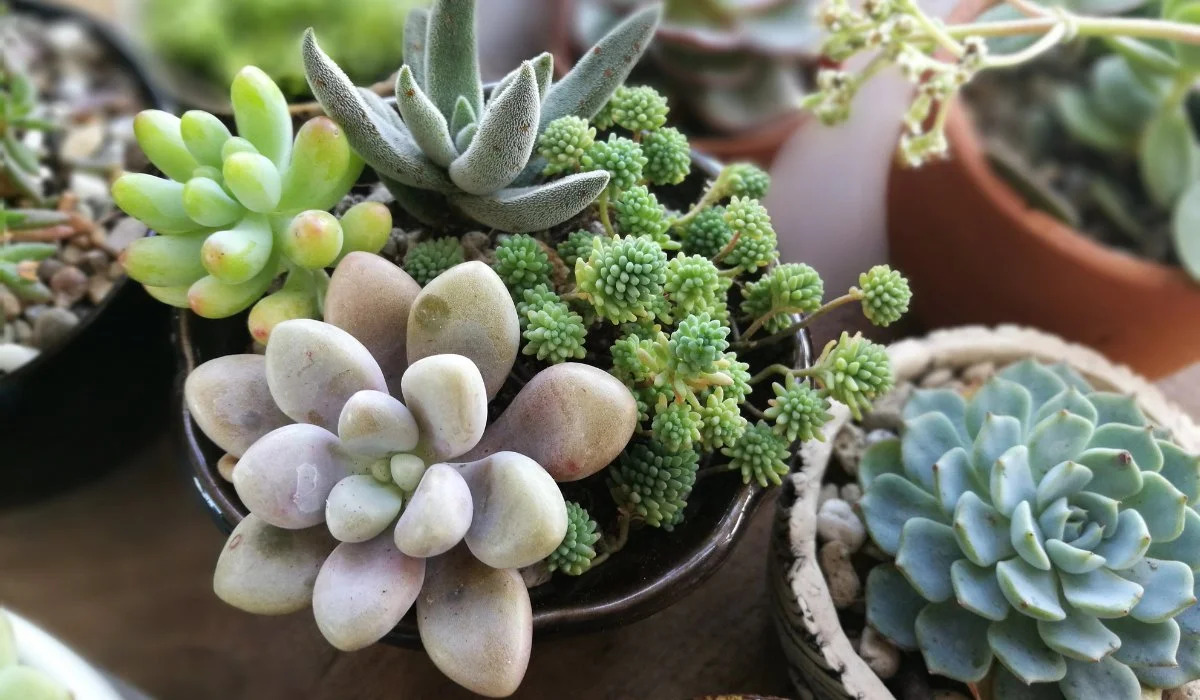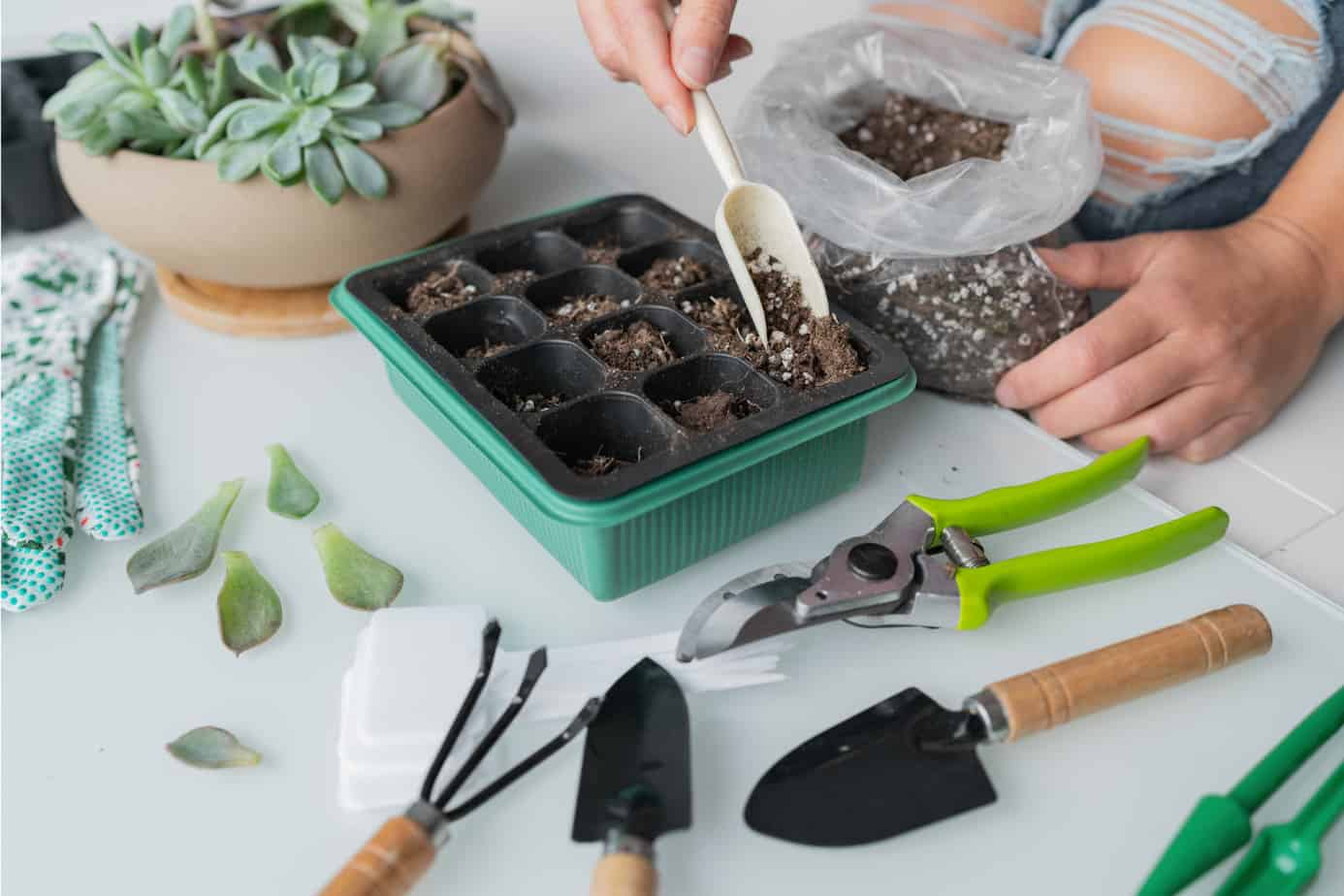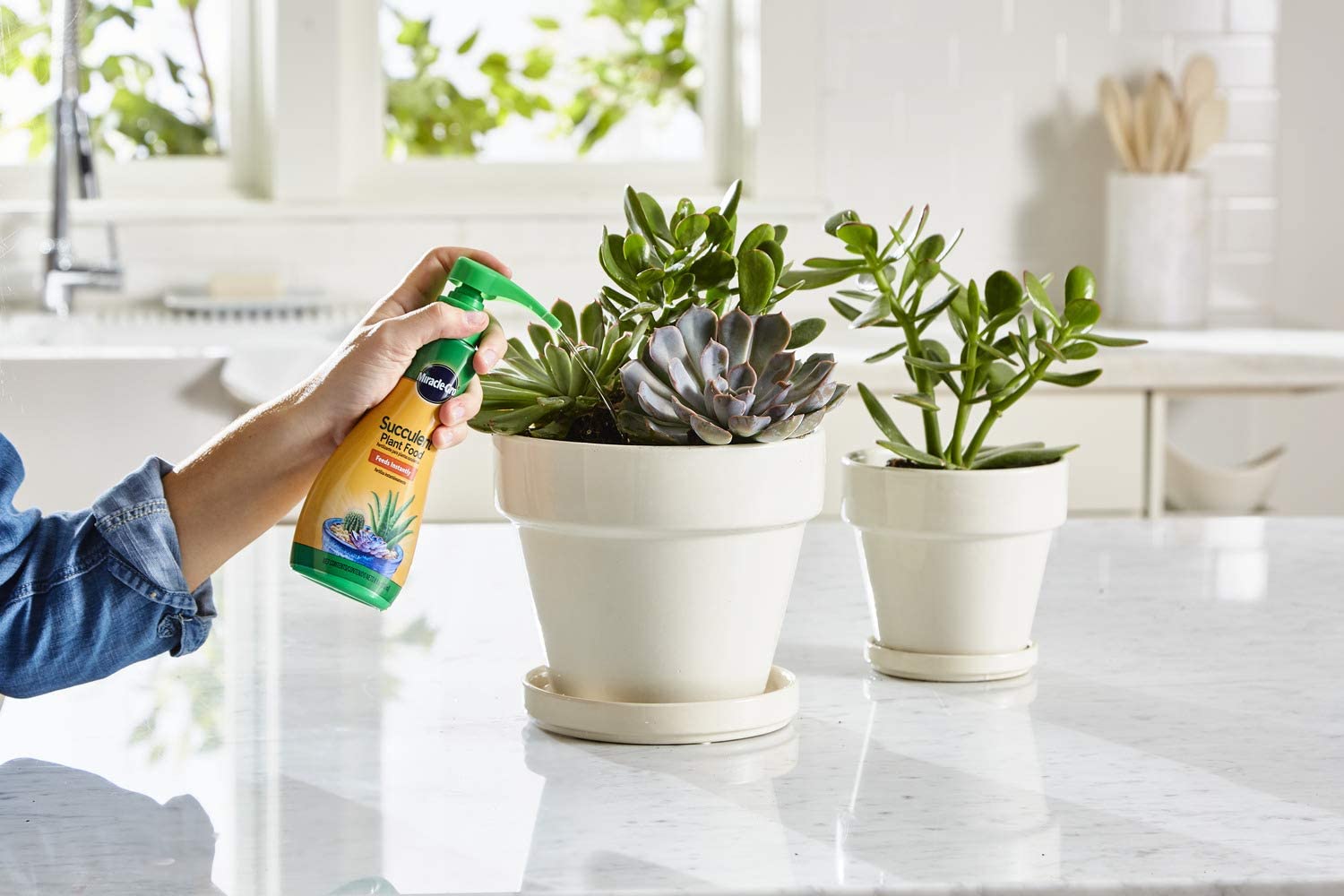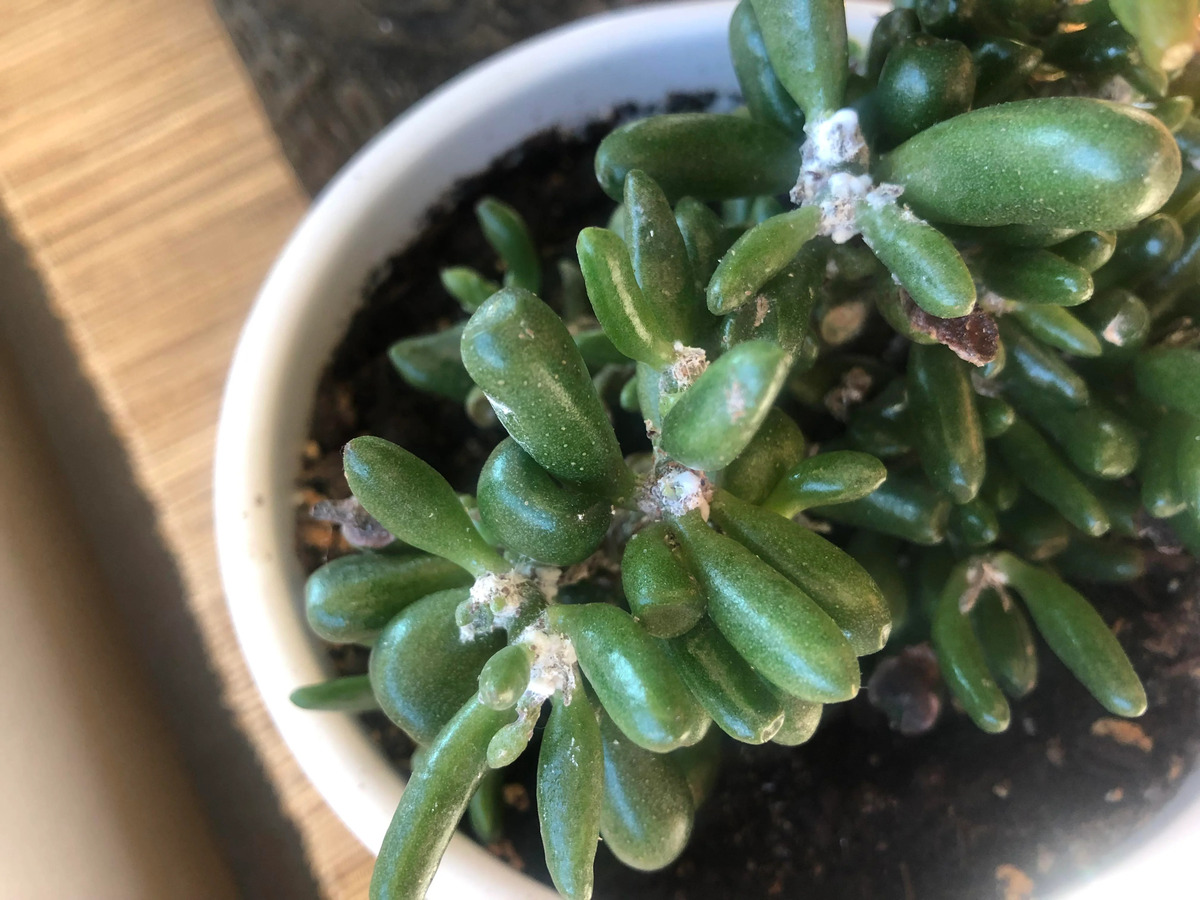Home>Types of Gardening>Ornamental Gardening>What Is The Best Soil For Succulents
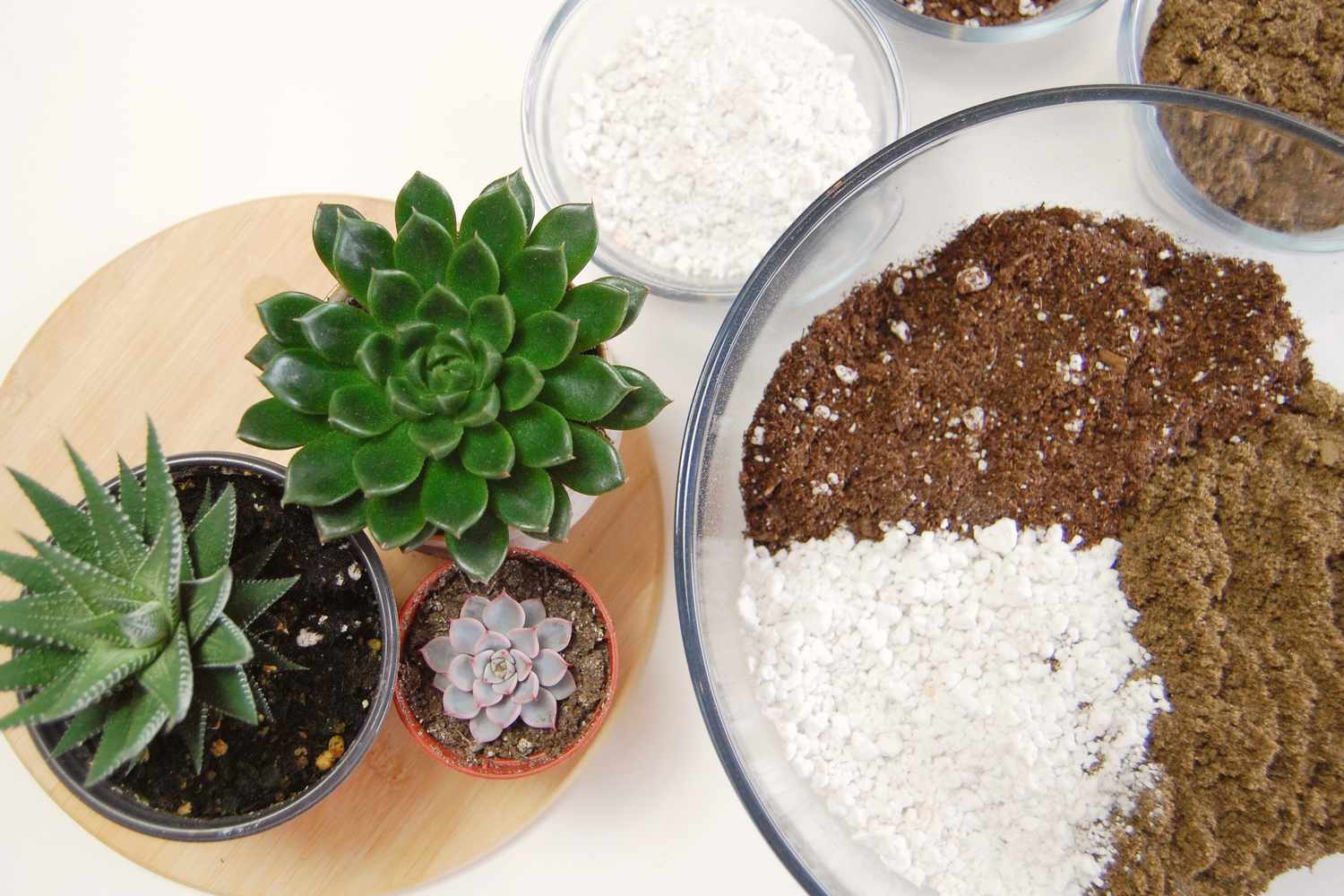

Ornamental Gardening
What Is The Best Soil For Succulents
Modified: February 10, 2024
Discover the best soil for succulents in ornamental gardening. Find out how to provide the perfect growing conditions for your beautiful succulent collection.
(Many of the links in this article redirect to a specific reviewed product. Your purchase of these products through affiliate links helps to generate commission for Chicagolandgardening.com, at no extra cost. Learn more)
Table of Contents
- Introduction
- What are succulents?
- Importance of choosing the right soil for succulents
- Factors to consider when choosing soil for succulents
- Characteristics of the best soil for succulents
- Different types of soil recommended for succulents
- Making your own succulent soil mix
- Where to buy the best soil for succulents
- Conclusion
Introduction
Welcome to the world of succulents! These striking and low-maintenance plants have gained immense popularity among gardeners and indoor plant enthusiasts. With their unique shapes, vibrant colors, and ability to store water in their leaves, succulents are a perfect choice for those who desire a touch of nature in their homes or gardens.
When it comes to caring for succulents, one crucial aspect that often goes overlooked is the type of soil they are planted in. The right soil can make all the difference in the health and vitality of your succulents, ensuring they thrive and flourish. In this article, we will explore the importance of choosing the best soil for your succulents and provide valuable tips to help you make the right decision.
Succulents have unique water needs due to their ability to store water in their fleshy leaves and stems. This adaptation allows them to survive in arid conditions with limited rainfall. However, it also means they require well-draining soil to prevent their roots from sitting in excess moisture, which can lead to root rot and ultimately the death of the plant.
Choosing the right soil for your succulents is crucial to ensure their health and longevity. The ideal soil composition for succulents promotes excellent drainage while still retaining enough moisture to support the plant’s water needs. It should allow excess water to swiftly drain away, preventing the roots from becoming waterlogged.
In the following sections, we will delve deeper into the factors to consider when choosing soil for succulents, the characteristics of the best soil, different types of soil that are recommended for succulents, as well as how to make your own succulent soil mix. Whether you are a seasoned gardener or just starting on your succulent journey, this guide will provide you with the knowledge to ensure the success of your succulent plants.
What are succulents?
Succulents are a diverse group of plants that have thick, fleshy leaves, stems, or roots that allow them to store water. These plants have evolved to thrive in arid and semi-arid regions where water is scarce. The peculiar feature that sets succulents apart from other plants is their ability to retain water in their tissues, which enables them to survive long periods of drought.
Succulents belong to various plant families and encompass a wide range of species, each with its own unique characteristics and growth habits. They come in various shapes, sizes, and colors, making them popular choices for both indoor and outdoor gardens. Some popular succulent varieties include Echeveria, Aloe, Haworthia, Sedum, and Crassula.
These plants have adapted to survive in extreme conditions by evolving specialized water-storage cells in their leaves, stems, or roots. These cells allow them to absorb and retain large amounts of water, allowing them to endure prolonged periods without rainfall. The ability to store water not only makes succulents resilient but also gives them their distinctive appearance.
Another fascinating aspect of succulents is their ability to propagate through different methods. Many succulents can reproduce through methods such as leaf cuttings, stem cuttings, division, or even by producing offsets or pups. This makes them excellent choices for plant enthusiasts who enjoy propagating new plants from existing ones.
Succulents are known for their versatility and can be grown both indoors and outdoors, depending on the species and the prevailing climate conditions. They are often favored as houseplants due to their low maintenance requirements and ability to thrive in dry environments. With their striking aesthetics and unique forms, succulents have become increasingly popular as decorative plants in offices, homes, and gardens.
Whether you are a beginner or an experienced gardener, succulents are a rewarding addition to any plant collection. Their resilience, beauty, and adaptability make them an ideal choice for those looking to add a touch of nature to their lives. In the next sections, we will discuss the importance of choosing the right soil for succulents and explore the factors that should be considered when selecting soil for these remarkable plants.
Importance of choosing the right soil for succulents
When it comes to growing healthy and thriving succulent plants, choosing the right soil is of utmost importance. The soil in which your succulents are planted directly affects their overall health, growth, and ability to withstand various environmental conditions. Here are some key reasons why choosing the right soil for your succulents is crucial:
1. Proper drainage: Succulents are adapted to thrive in arid conditions, and their roots are not equipped to handle excessive moisture. The right soil will provide excellent drainage, allowing any excess water to quickly drain away. This prevents waterlogged roots, which can cause root rot and eventually lead to the death of the plant.
2. Prevention of overwatering: Overwatering is one of the most common mistakes made when caring for succulents. Using the right soil can help prevent overwatering by allowing water to pass through the soil quickly instead of pooling around the roots. This helps maintain the proper moisture balance for the plant’s needs.
3. Nutrient availability: Succulents have specific nutrient requirements, and the right soil will provide these essential nutrients to support their growth and overall health. The soil should be rich in organic matter and well-balanced in nutrients such as nitrogen, phosphorus, and potassium.
4. Root development: Succulents develop a robust root system, and the right soil will promote healthy root development. Well-draining soil encourages the roots to spread and establish a strong foundation, allowing the plant to absorb nutrients efficiently and anchor itself securely.
5. Disease prevention: Using the right soil for your succulents can help prevent the occurrence of diseases and pests. Properly draining soil reduces the likelihood of fungal growth, root rot, and insect infestations, keeping your succulents healthy and vibrant.
6. Aesthetics and presentation: The type of soil you choose can also contribute to the overall aesthetics of your succulent arrangement. Many succulent enthusiasts prefer using specialized succulent mixes that are specifically designed to enhance the appearance of the plants while providing optimal growing conditions.
7. Long-term plant success: By choosing the right soil, you provide your succulents with the best possible foundation for long-term success. Healthy soil promotes healthy plants, which in turn have a greater chance of thriving and producing new growth, ensuring your succulents remain beautiful and vibrant for years to come.
In the following sections, we will discuss the factors to consider when choosing soil for succulents and explore the characteristics of the best soil for these remarkable plants. Having a good understanding of these factors will help you make informed decisions and create the perfect growing environment for your succulent plants.
Factors to consider when choosing soil for succulents
Choosing the right soil for your succulents involves considering several important factors. By taking these factors into account, you can create the optimal growing conditions for your plants. Here are the key factors to consider when selecting soil for your succulents:
1. Drainage: Succulents require well-draining soil to prevent their roots from sitting in water, which can lead to root rot. Look for a soil mix that allows excess water to drain away quickly. A good drainage system ensures that the soil retains enough moisture to support the plants’ water needs while preventing waterlogging.
2. Aeration: Oxygen is essential for healthy root growth. Soil that is too compacted or heavy can restrict airflow to the roots, leading to root suffocation. Look for a soil mix that is porous and loosely textured to promote proper aeration and gas exchange within the root zone.
3. Water retention: While succulents prefer dry conditions, the soil should still retain some moisture for the plants to access during periods of drought. Look for a soil mix with moderate water retention capacity. Avoid soils that hold too much moisture, as this can lead to overwatering and root issues.
4. Organic matter: Adding organic matter to the soil mix can provide essential nutrients and improve soil structure. Look for soil mixes that contain a healthy amount of organic matter, such as well-rotted compost or coconut coir. These organic materials help retain moisture, increase nutrient availability, and improve overall soil fertility.
5. pH level: Succulents generally prefer a slightly acidic to neutral pH range. A soil pH between 6.0 and 7.0 is usually suitable for most succulent varieties. Avoid soils that are too acidic or alkaline, as extreme pH levels can interfere with nutrient uptake and affect plant health.
6. Nutrient content: Succulents have specific nutrient requirements, and the soil should provide adequate nutrition. Look for a soil mix that is rich in essential nutrients like nitrogen, phosphorus, and potassium. Alternatively, you can add a slow-release succulent fertilizer to the soil to provide a steady supply of nutrients over time.
7. Sterility: Avoid using soil mixes that contain additives like vermiculite or perlite. These materials can break down over time and affect the overall stability and composition of the soil. Look for a sterile, well-balanced soil mix to minimize the risk of pest infestations and plant diseases.
8. Ease of use: Consider the practicality of the soil mix in terms of its availability and ease of use. Some gardeners prefer to purchase pre-made succulent soil mixes, while others enjoy making their own using a combination of ingredients. Choose a soil mix that suits your gardening style and preferences.
By considering these factors, you can select a soil mix that provides the optimal growing conditions for your succulents. In the next section, we will explore the characteristics of the best soil for succulents to help you make informed choices for your plants’ needs.
Characteristics of the best soil for succulents
The best soil for succulents is one that provides optimal conditions for their growth and ensures their overall health and vitality. Here are the key characteristics to look for in the best soil for succulents:
1. Well-draining: Succulents thrive in environments with excellent drainage. The best soil for succulents should allow water to pass through quickly, preventing the roots from sitting in standing water, which can lead to root rot. Look for a soil mix that is specifically formulated for succulents or one that is light and porous, allowing excess water to drain away swiftly.
2. Porous and aerated: Succulent roots require oxygen to breathe. The best soil should be porous, allowing air to circulate freely through the root zone. It should be loosely textured, preventing compaction and enabling proper aeration. Aeration ensures that the roots have access to sufficient oxygen, which is vital for healthy root development.
3. Moisture-retaining: While succulents prefer dry conditions, the soil should still retain some moisture to support the plants during periods without rainfall. The best soil mixes for succulents strike a balance between good drainage and moisture-retention. Look for a soil that allows excess water to drain away but retains enough moisture for the plants’ hydration needs.
4. pH balanced: Succulents generally prefer a slightly acidic to neutral pH range. The best soil for succulents should have a pH between 6.0 and 7.0. This pH range ensures optimal nutrient uptake and prevents nutrient deficiencies or toxicities. You can test the pH of your soil using a soil pH testing kit to verify its suitability for succulents.
5. Rich in organic matter: Organic matter improves soil structure, enhances nutrient availability, and retains moisture. The best soil for succulents should contain organic matter, such as well-rotted compost or coconut coir, to promote healthy root growth and provide essential nutrients. Organic matter also encourages microbial activity, which contributes to the overall health of the soil ecosystem.
6. Low in fertilizer: Succulents are not heavy feeders, and excessive fertilization can be detrimental to their health. The best soil for succulents should have a low nutrient content or be free from added fertilizers. Look for a soil mix that allows you to control the nutrient input through appropriate fertilization practices tailored to the specific needs of your succulents.
7. Sterile: Using sterile soil minimizes the risk of pests and diseases. The best soil for succulents should be free from pathogens, insects, and weed seeds that could harm your plants. Look for soil mixes that are commercially produced and sterilized, ensuring a clean and healthy environment for your succulents.
8. Easy to work with: The best soil for succulents should be easy to work with and suit your gardening preferences. Whether you choose to purchase pre-made succulent soil mixes or create your own, consider factors such as availability, cost, and convenience. Choose a soil mix that aligns with your gardening style and provides the best growing conditions for your succulents.
By considering these characteristics, you can select the best soil for your succulents, providing them with an optimal growing environment. In the next section, we will explore different types of soil recommended for succulents, giving you various options to choose from.
Different types of soil recommended for succulents
When it comes to choosing soil for your succulents, there are various options available that can provide the ideal growing conditions. Here are some of the different types of soil recommended for succulents:
1. Succulent and cactus soil mix: This type of soil mix is specifically formulated for succulents and cacti. It usually consists of a blend of materials such as sand, perlite, and organic matter. The coarse texture of the mix promotes excellent drainage and prevents waterlogging. Succulent and cactus soil mixes are readily available at garden centers or can be purchased online.
2. Sandy soil mix: Sandy soil is well-known for its excellent drainage properties. It is a suitable choice for succulents that prefer drier conditions. You can create a sandy soil mix by mixing regular potting soil with coarse sand in a 1:1 ratio. The sandy texture helps prevent waterlogged roots and provides sufficient aeration for the plants.
3. Gravelly soil mix: Gravelly soil mixes are commonly used for succulents that thrive in rocky or arid environments. These mixes contain a combination of materials such as small stones, gravel, and coarse sand. The presence of gravel allows for efficient drainage and helps mimic the natural habitat of succulents. Avoid using large-sized gravel that may impede root growth.
4. Perlite and pumice mix: Perlite and pumice are lightweight volcanic materials that promote excellent drainage when mixed with other soil components. These materials have high porosity, ensuring proper aeration and preventing waterlogged roots. You can create a soil mix by combining perlite or pumice with equal parts of regular potting soil or cactus soil mix.
5. Mineral-based soil mix: Some succulents, such as lithops or living stones, prefer a mineral-based soil mix that closely resembles their natural habitat. This type of soil mix contains primarily mineral ingredients like granite grit, crushed limestone, and coarse sand. Mineral-based mixes provide good drainage and closely mimic the native growing conditions of these specialized succulents.
6. DIY succulent soil mix: If you prefer to create your own succulent soil mix, you can combine various ingredients to achieve the desired characteristics. A typical DIY mix may consist of equal parts of regular potting soil or peat moss, coarse sand or perlite, and well-rotted compost or coconut coir. Experiment with different ratios to find the mix that works best for your succulents.
It’s important to note that different succulent species have varying soil preferences, so it’s essential to consider their specific needs when choosing a soil type. Additionally, keep in mind the environmental conditions in your area, such as humidity and rainfall, which may influence the suitability of different soil mixes.
Whichever soil type you choose, ensure it provides the necessary drainage and aeration while retaining some moisture to support your succulents’ needs. Remember that the best soil for succulents closely mimics their natural habitat, providing them with the ideal conditions for growth and keeping them healthy and thriving.
In the next section, we will explore how you can make your own succulent soil mix, allowing you to have greater control over the composition and characteristics of the soil.
Making your own succulent soil mix
Making your own succulent soil mix allows you to have control over the composition and characteristics of the soil, ensuring it meets the specific needs of your succulents. Here is a simple guide to help you make your own succulent soil mix:
1. Gather the ingredients: To make your own succulent soil mix, you will need a few key ingredients. These typically include regular potting soil or peat moss, coarse sand or perlite, and well-rotted compost or coconut coir. These components will provide the necessary drainage, aeration, and nutrient content for your succulents.
2. Mix the ingredients: In a large container or bucket, mix the ingredients in the desired ratios. A common ratio is equal parts potting soil or peat moss, coarse sand or perlite, and well-rotted compost or coconut coir. Adjust the ratio based on the specific needs of your succulents and the environmental conditions in your area.
3. Blend thoroughly: Use a garden trowel or your hands to thoroughly blend the ingredients together. Ensure that the mixture is well-integrated, with no clumps or large particles that could hinder drainage or aeration. This thorough blending will provide a uniform texture and consistency throughout the soil mix.
4. Test the moisture retention: After mixing your succulent soil blend, moisten it slightly with water. Test the moisture retention by squeezing a handful of soil. It should hold its shape briefly and then crumble easily. If the soil retains too much moisture or becomes compacted, consider adding more coarse sand or perlite to improve drainage and aeration.
5. Adjust as needed: Depending on the specific requirements of your succulents and the conditions in your area, you may need to adjust the DIY soil mix. For succulents that prefer drier conditions, you can increase the proportion of sand or perlite to enhance drainage. Conversely, if you live in an extremely arid environment, you may want to increase the amount of well-rotted compost or coconut coir to improve moisture retention.
6. Label and store: Once you have achieved the desired soil mix, label the container or bag for future reference. Store the soil mix in a dry and airtight container to preserve its quality and prevent the growth of mold or pests. Proper storage will ensure that your homemade succulent soil mix remains ready for use whenever you need to repot or propagate your succulents.
By making your own succulent soil mix, you can customize the composition to meet the specific needs of your succulents. This DIY approach allows for flexibility and experimentation, ensuring your plants have the best possible growing environment.
In the next section, we will explore where you can buy the best soil for succulents if you prefer not to make your own mix.
Where to buy the best soil for succulents
When it comes to purchasing soil for your succulents, there are several options available to ensure you get the best quality soil that meets the specific needs of your plants. Here are some places where you can buy the best soil for succulents:
1. Local garden centers or nurseries: Visiting your local garden center or nursery is a great option for sourcing succulent soil. These establishments often carry a variety of soil options specifically formulated for succulents or cacti. The advantage of buying locally is that you can speak with knowledgeable staff who can provide guidance and recommend the best soil mix for your succulent varieties.
2. Online retailers: The internet offers a wide range of options for purchasing succulent soil. Many reputable online retailers specialize in selling soil mixes specifically designed for succulents. This option provides convenience, especially if you don’t have local garden centers nearby or prefer the convenience of having the soil delivered to your doorstep. Be sure to read reviews and check the seller’s reputation before making a purchase.
3. Succulent specialty stores: Specialty stores that focus on succulents and cacti often carry their own proprietary soil mixes. These stores place a strong emphasis on providing the best soil for succulents, ensuring their customers have the optimal growing conditions. Visiting a succulent specialty store can be a great opportunity to explore unique soil blends formulated by experts in succulent care.
4. Home improvement stores: Many large home improvement stores have a garden section that offers a variety of gardening supplies, including soil mixes for succulents. While the selection may not be as extensive as at specialized nurseries or online retailers, these stores often carry affordable options that can meet the basic requirements for growing succulents successfully.
5. DIY and gardening centers: DIY and gardening centers often have the necessary ingredients for creating your own succulent soil mix. You can find components like potting soil, sand, perlite, compost, and other additives. This option is ideal if you prefer to customize your soil mix or have specific requirements for your succulents.
6. Local succulent clubs and societies: Joining local succulent clubs or societies can connect you with fellow enthusiasts who may be willing to share or sell their own soil mixes. These groups often have members who are experienced in succulent care and can offer valuable advice and recommendations. Attending meetings or workshops can also be a wonderful opportunity to exchange knowledge and learn about various soil options.
When purchasing soil for your succulents, be sure to consider the specific needs of your plants, such as their preferred soil texture, drainage requirements, and environmental conditions. Additionally, remember to ask for advice from professionals or experienced succulent enthusiasts to ensure you choose the best soil option for your particular succulent varieties.
Now that you know where to buy the best soil for succulents, you can provide your plants with the optimal growing medium to flourish and thrive.
Conclusion
The right soil is essential for the health and success of your succulent plants. Choosing a soil mix that provides excellent drainage, proper aeration, and sufficient moisture retention is key to ensuring your succulents thrive and flourish. Whether you decide to purchase a pre-made succulent soil mix or make your own, understanding the characteristics and factors involved in selecting the best soil for succulents is crucial.
Consider the unique needs of your succulent plants, such as their preferred soil texture, drainage requirements, and environmental conditions. Factors like drainage, aeration, moisture retention, pH level, and nutrient content should guide your decision-making process. By providing the appropriate soil conditions, you create an environment that supports healthy root development, prevents root rot, and enhances overall plant vigor.
Options for obtaining the best soil for succulents include local garden centers, online retailers, succulent specialty stores, home improvement stores, DIY and gardening centers, as well as local succulent clubs and societies. Each of these sources offers a variety of soil options tailored to meet the needs of succulents.
If you prefer to make your own succulent soil mix, consider the ingredients and their ratios carefully. A well-draining mix comprising regular potting soil or peat moss, coarse sand or perlite, and well-rotted compost or coconut coir can provide optimal growing conditions for your succulents. Adjust the mix as needed to suit your plants’ requirements and the environmental conditions in your area.
Remember, the best soil for succulents closely mimics their natural habitat, providing the ideal balance of drainage, aeration, and moisture retention. By choosing the right soil and creating a suitable environment, you can enjoy the beauty and resilience of your succulents as they thrive and bring a touch of nature into your home or garden.
